A few weekends ago we traveled down to Ocala for the annual Silver-River Knap-In, an event highlighting the technology of the early Native peoples of Florida, with demonstrators making stone tools (flintknapping), cordage, baskets, canoes, and of course, pottery.
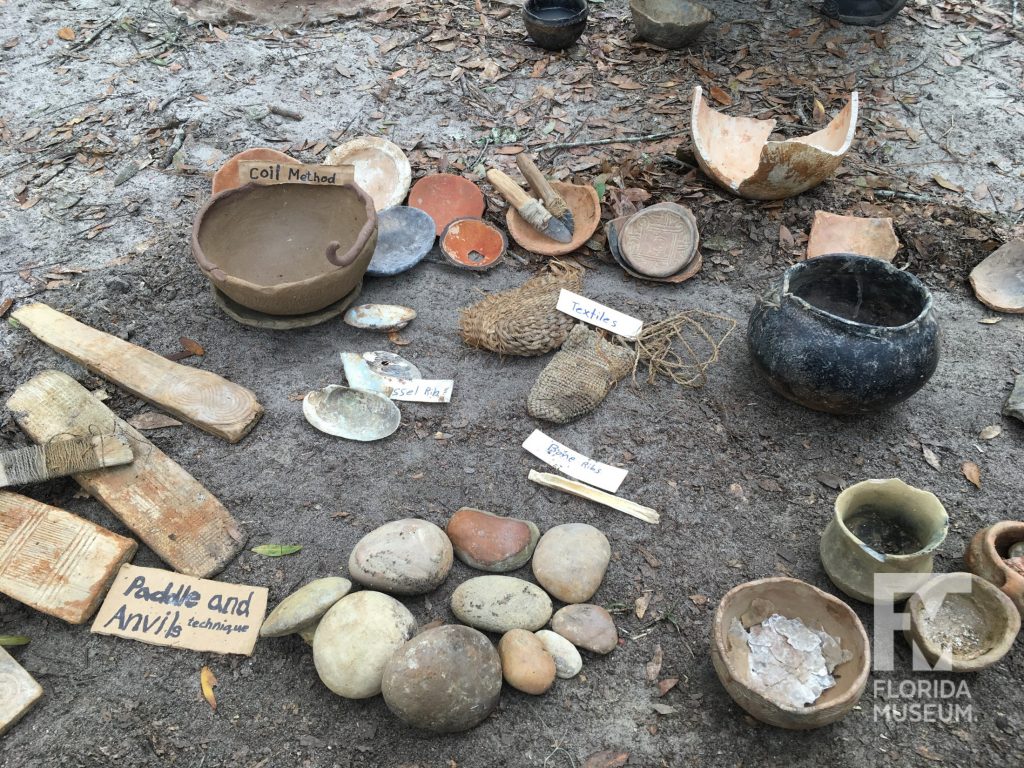
Our display focused on archaeological examples of pottery from Florida. To see pottery being made using traditional methods, we went over to visit Keith Turnstone.
Keith is a potter who focuses on making pottery the way it has been made for thousands of years. On site at the festival, he had set up a pottery making camp with all of the tools he would need. He had collected clay from several different areas in Florida prior to arriving at the Knap-In.
Raw clay usually has impurities like rocks or roots that need to be removed, and may need to have tempering agents such as sand added to improve workability. It should be well-mixed to make it homogenous. As you can see, the color of the raw clay clods is different from the smooth ball because of blending.
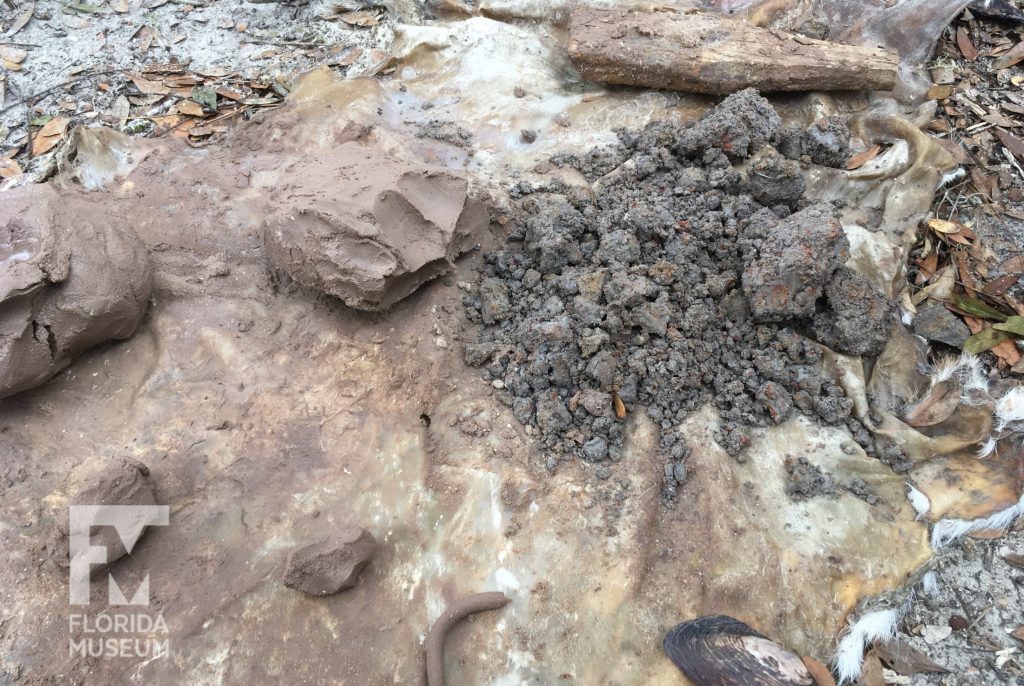
Keith has a variety of tools for shaping and decorating pots. For example, carved wooden paddles were used to compact the walls of pots and leave a design. Swift Creek Complicated Stamped pottery was made using paddles like these.
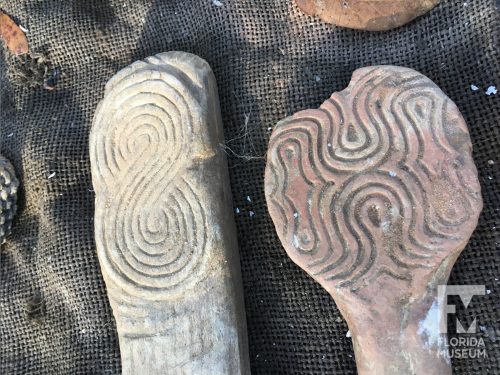
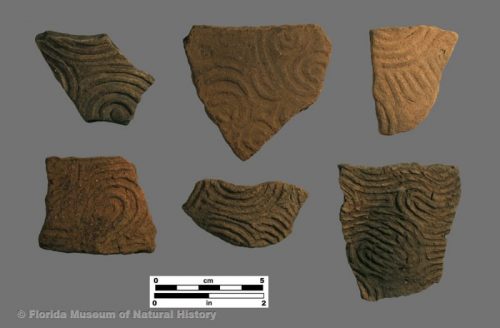
To fire his pots, Keith slowly dries them next to his campfire, gradually edging them closer to the heat, until they are in the flames and reach full temperature. After the fire has died down, the pots cool and can be removed. If all goes well, they stay in one piece!

At this point the pot is complete, and can be used. Keith was slow cooking his dinner of beans in one of his replicas. Notice the broken sherds of pottery on top that act as a lid.
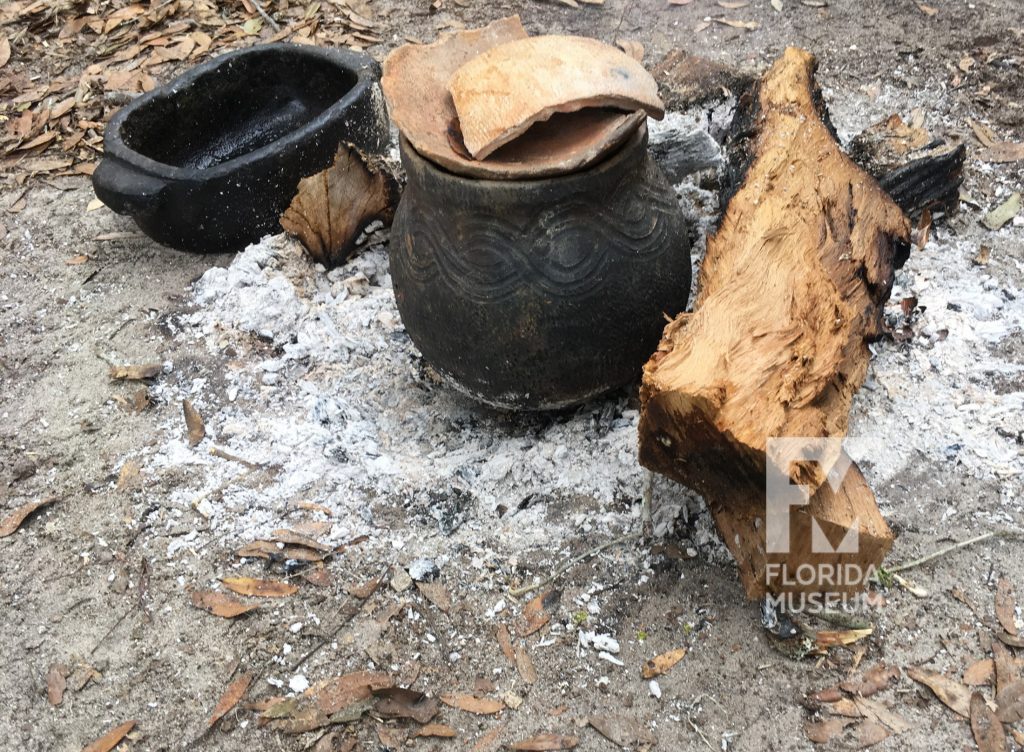
We appreciate the work of folks like Keith, who spend a lot of time making their own tools, testing clay recipes, and showing us what pottery making may have looked like in the past. Go see him next year!